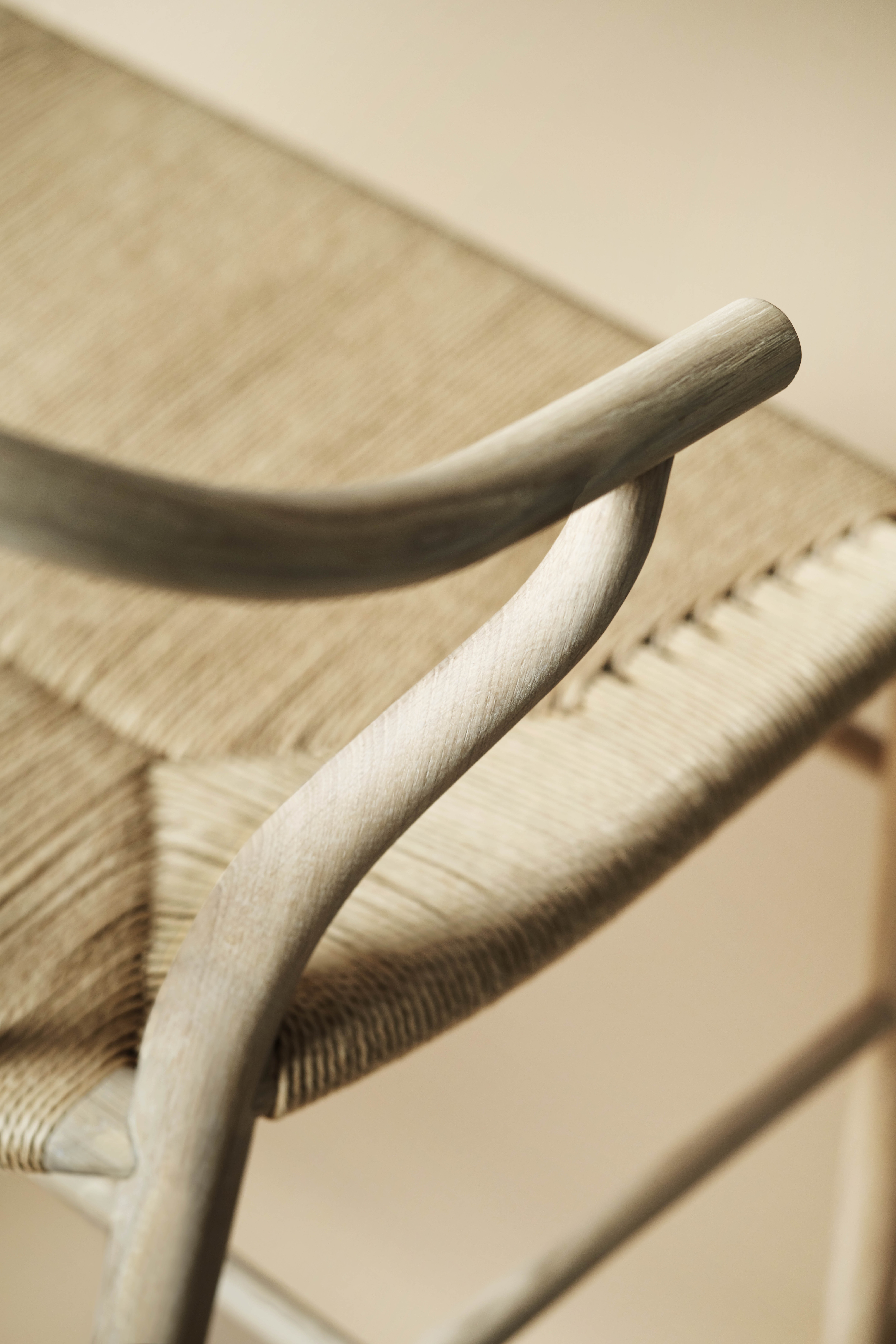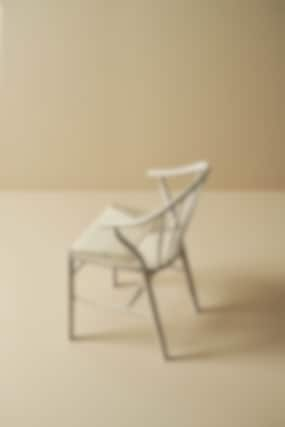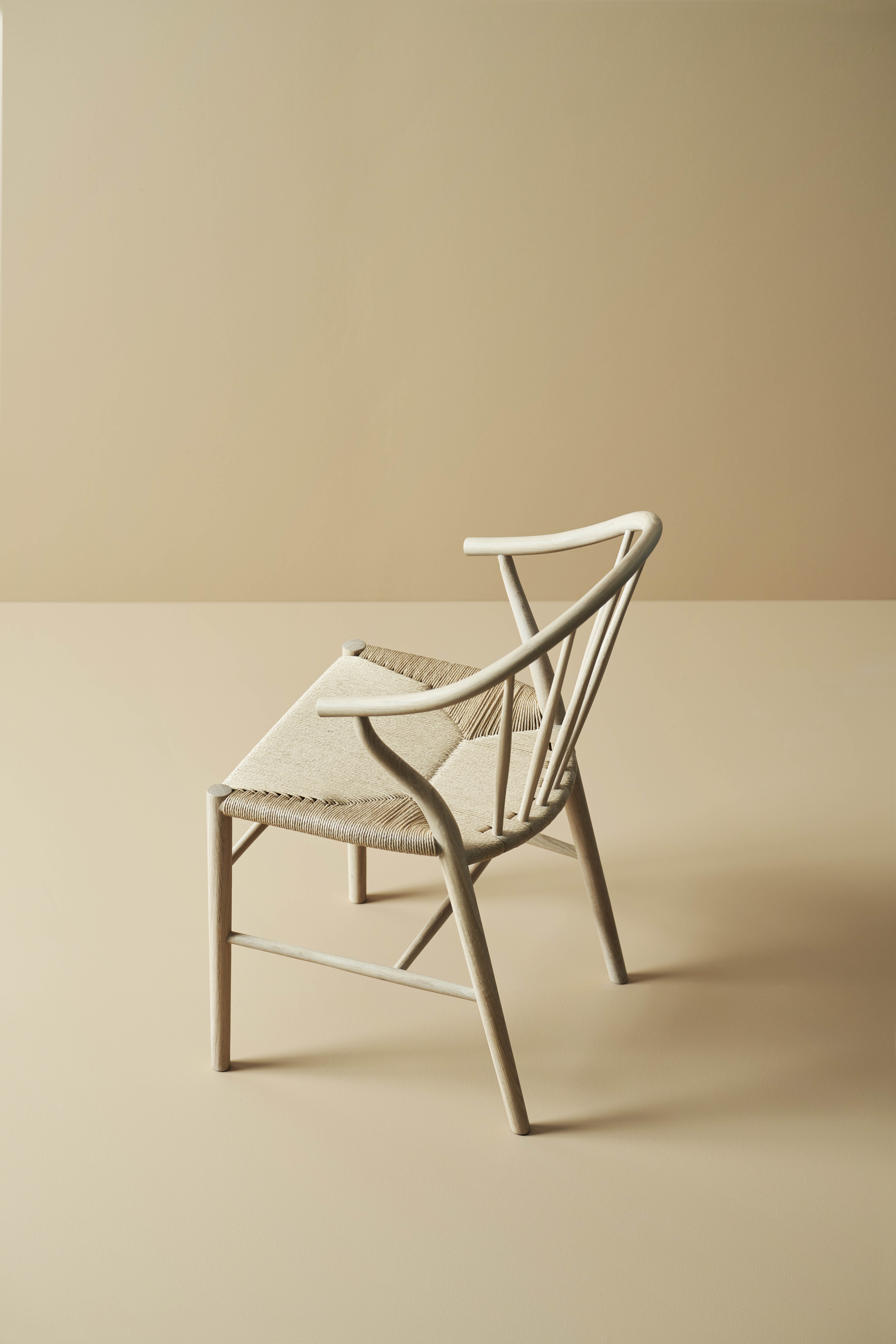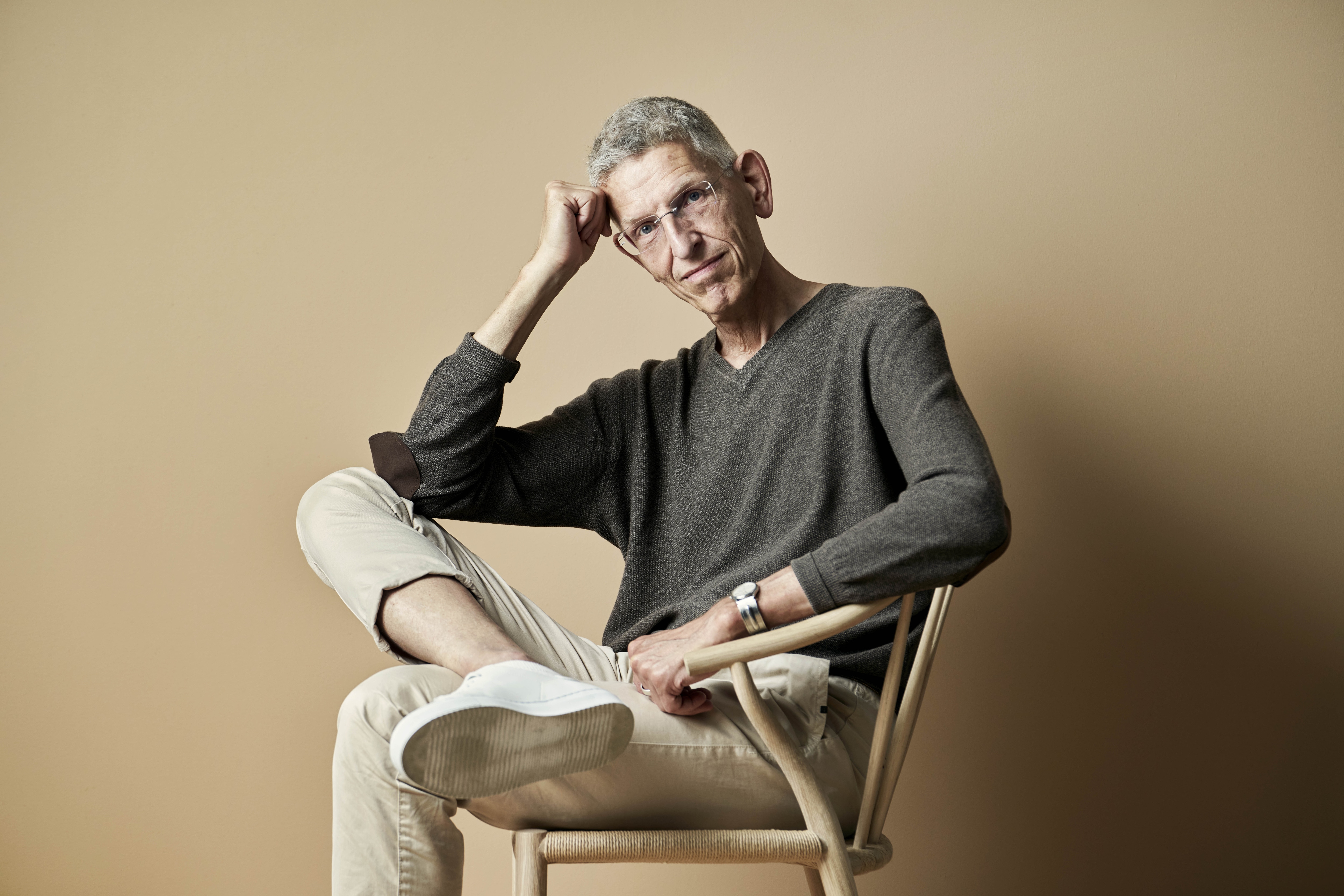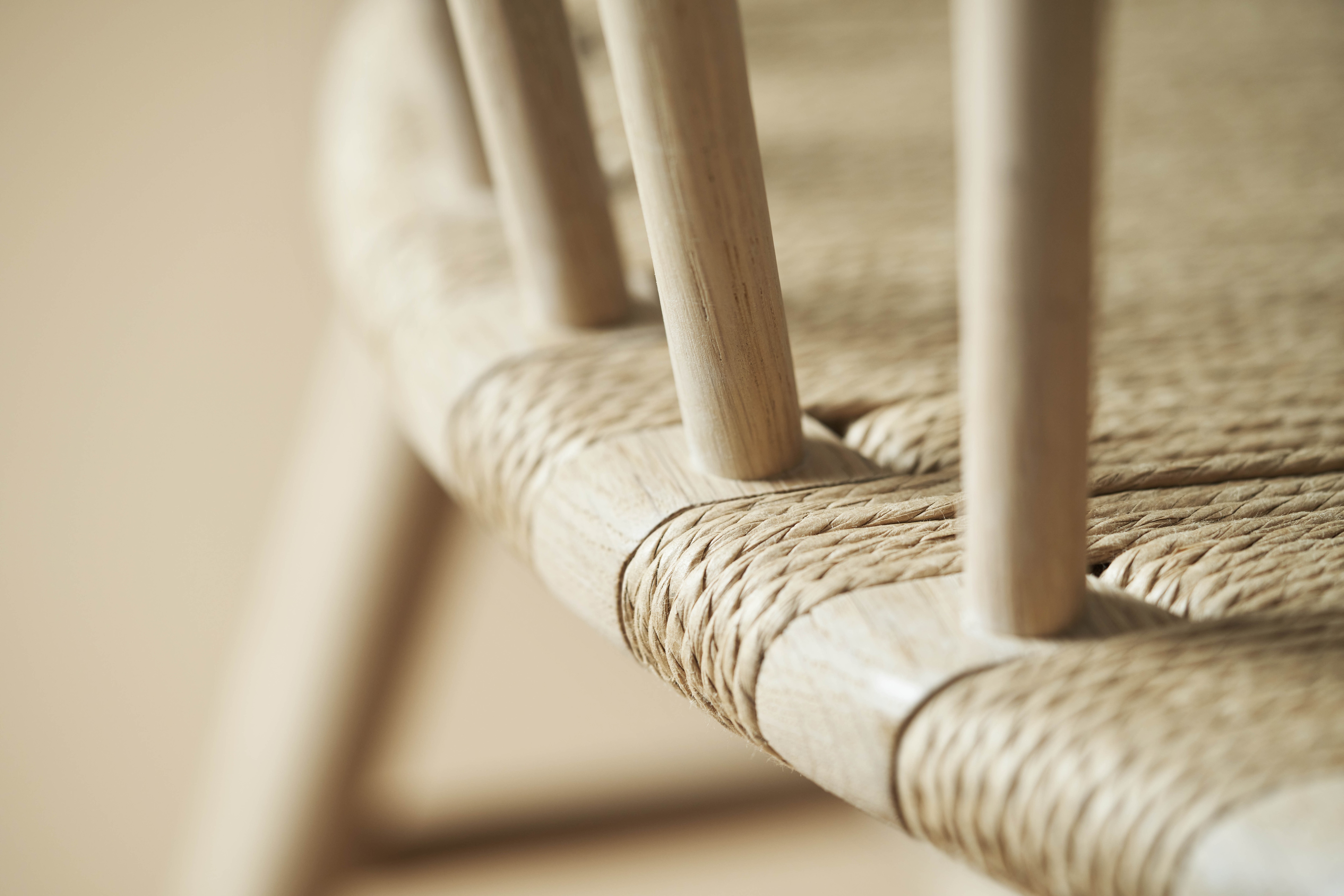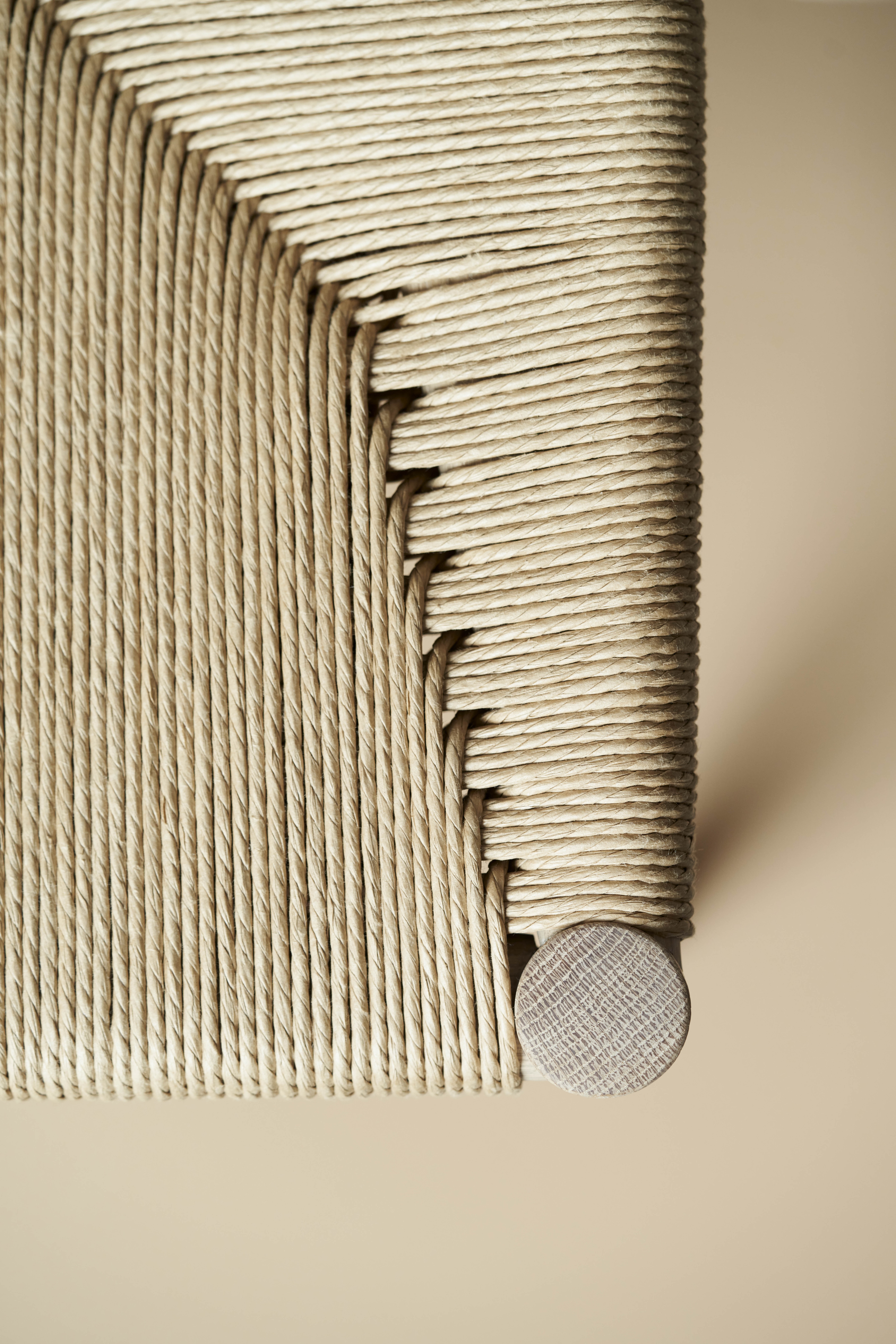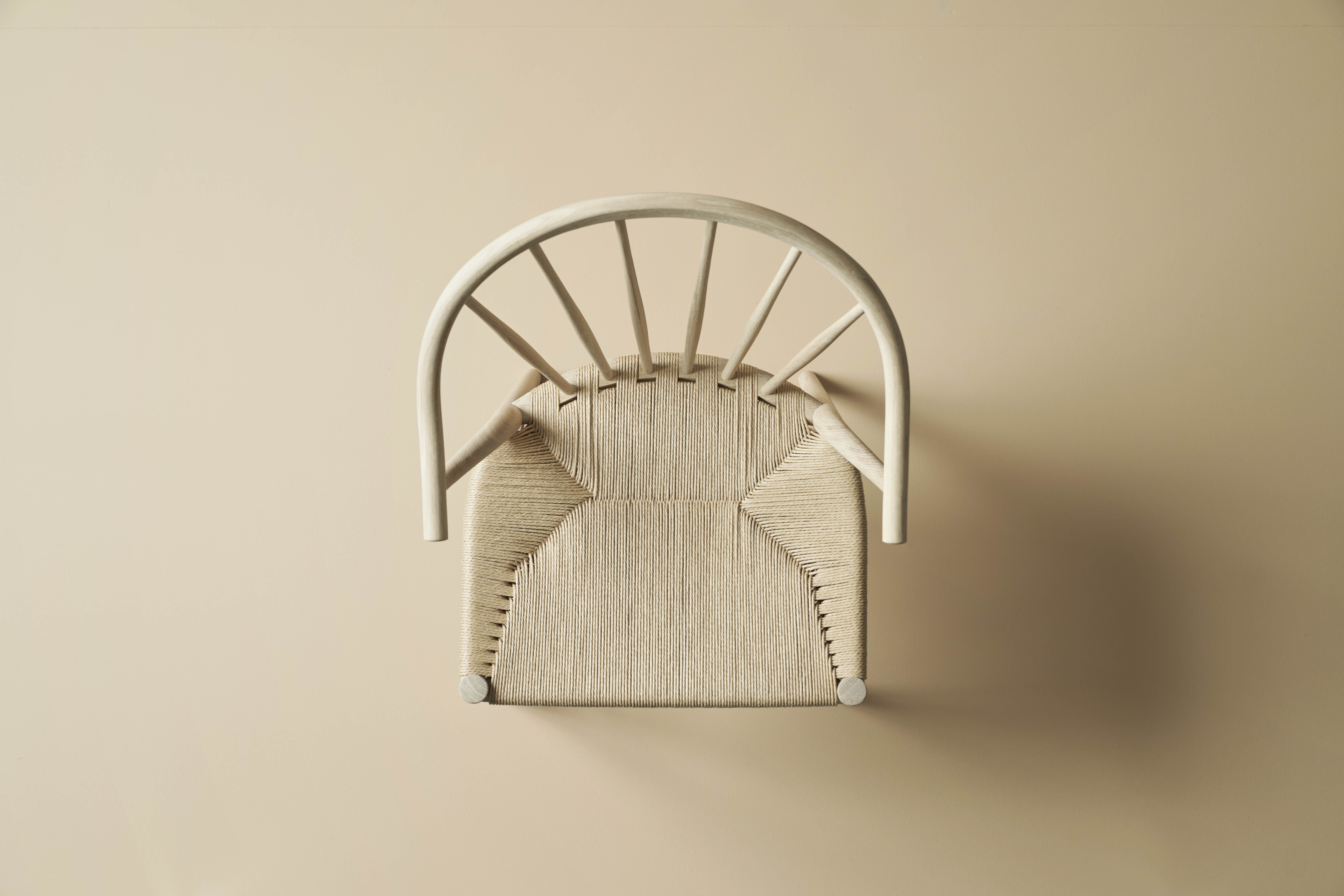February, 2022
Armchair China-Windsor - finding the shape for the feeling
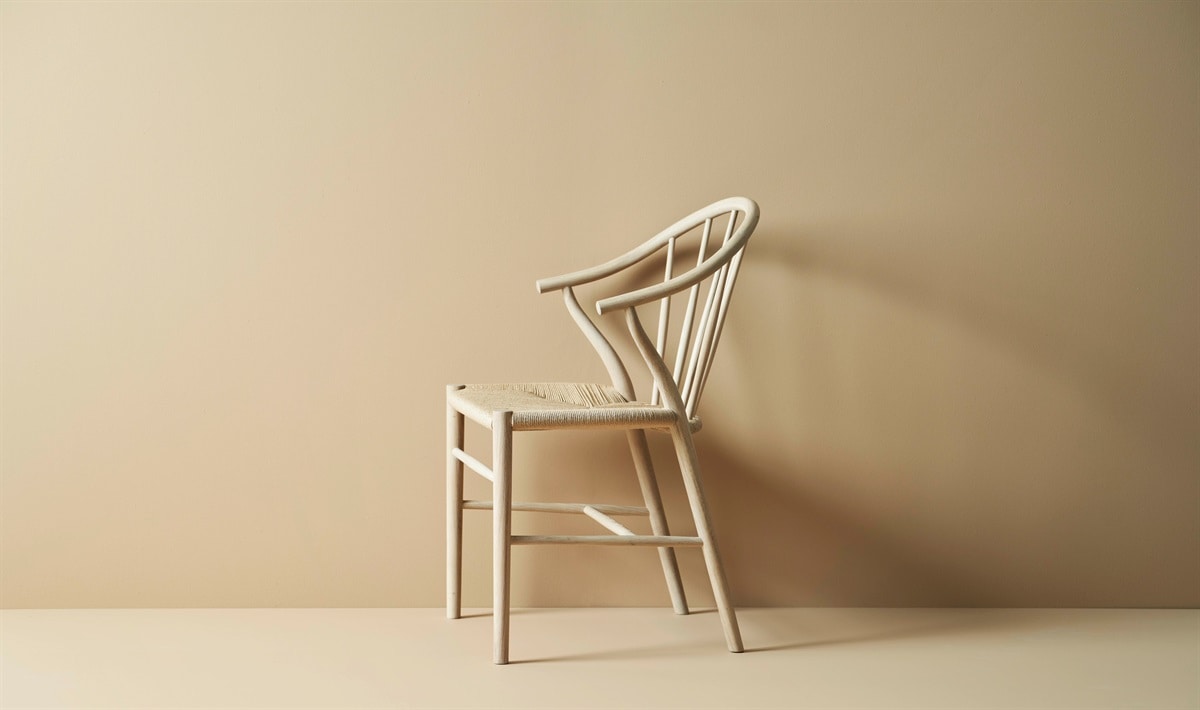
Norrgavel's furniture is made to last over time. That also means that the design process itself takes time. And sometimes it can actually take 14 years from idea to finished furniture. The seed for the Karmstol China-Windsor appeared in designer Nirvan Richter's sketchbooks as early as 2008. But the challenge lay in transforming a longing and a physical sensation into a finished piece of furniture. How do you actually do that? The brief answer is; countless sketches, prototypes, revisions, time for reflection - interspersed with a series of production challenges where craftsmanship was truly put to the test.
The name Armchair China-Windsor breathes influences from distant parts of the world, but also embodies a stripped-down Scandinavian design language and solid material feel. A chair with a slender silhouette and Chinese S-curved rear legs that impart character. The high comfort is primarily explained by the well-balanced seating angle, the anatomically contoured seat, and the Windsor-type backrest.
The Armchair China-Windsor is a chair that is as comfortable to look at as it is to sit in. The chair is made of solid oak, which is surface-treated with white oil.The Armchair China-Windsor is a chair that is as comfortable to look at as it is to sit in. The chair is made of solid oak, which is surface-treated with white oil.
A lifelong dream
With Armchair China-Windsor, one of the dreams that inspired Nirvan Richter to start Norrgavel almost 30 years ago was realized. In 'The idea behind,' Norrgavel's founder and designer, Nirvan Richter, describes the design process for Armchair China-Windsor.
During the design process, the working title was ”nature-air chair" – Now, the Armchair China-Windsor stands complete after years of work. Designer Nirvan Richter has found the shape for the feeling, and his dream has been realized.
The idea behind
"With Armchair China-Windsor, one of the dreams that led me to start Norrgavel is realized: 'Longing for a rounded chair with materials and lightness reminiscent of Danish chairs from when I was little, but more comfortable... sand, sun, light, air, soft skin, seashells...' I love it when the vision exists in the body before it takes physical form; the feeling in the seat, against the thigh, the lower back, the back, the forearm, the feeling of getting up, lifting. The working title was 'nature-air chair,' and the challenge - to find the shape for the feeling.
My sketchbooks from 2008 onwards show attempts in various directions, and parallel full-scale trials were carried out in the prototype workshop, but without us really getting it right. After New Year 2010, I watched the film adaptation of 'Sense and Sensibility' with a sequence that stuck with me; Windsor chairs with bow-backs forming an organic network around a table. The following year, the image returned in a finished design sketch, a nature-air chair with Chinese S-curved rear legs, a woven seat, and a Windsor-type back. But even though we were satisfied with the form itself, the process to the finished product is long and requires total focus. It wasn't until the end of 2017 that space was given for a fresh approach, when we systematically tackled the series of challenges - a phase where craftsmanship is truly put to the test:
· The seating angle was experimented with, and the rear legs were given their inclination and Chinese curvature.
· Inspiration for the chair back was drawn from the New York-style Windsor chair. The top rail received its inclination, beveling, and twist with an updated finish similar to the front legs - similar top rails can also be found on old Chinese chairs.
· The back spindles received their lumbar-supporting turning.
· To achieve greater comfort on the seat than with a typical woven seat, we worked with a master weaver to develop a more anatomical contour.
· The chair's slender silhouette is important, so to maintain strength, the side rails were subtly thickened into the weaving.
· The back rail achieved its stability with slits for the cords in front and recesses between each spindle.
· Finally, the leg supports were discreetly placed, ensuring optimal stability.
The Armchair China-Windsor has received its name from its sources of inspiration. The Chinese S-shaped rear legs give character, but the comfortable seating has its primary explanation in the seating angle, the anatomically contoured seat, and the Windsor-style back."
Nirvan Richter
Designer & founder of Norrgavel
Sketches over time
Norrgavel's furniture sketches are still done by hand. Every step, challenge, and revision is preserved in designer Nirvan Richter's countless sketches and notes. The long design process for the Armchair China-Windsor is illustrated in all these images and texts - from the idea stage 14 years ago to the finished chair today.
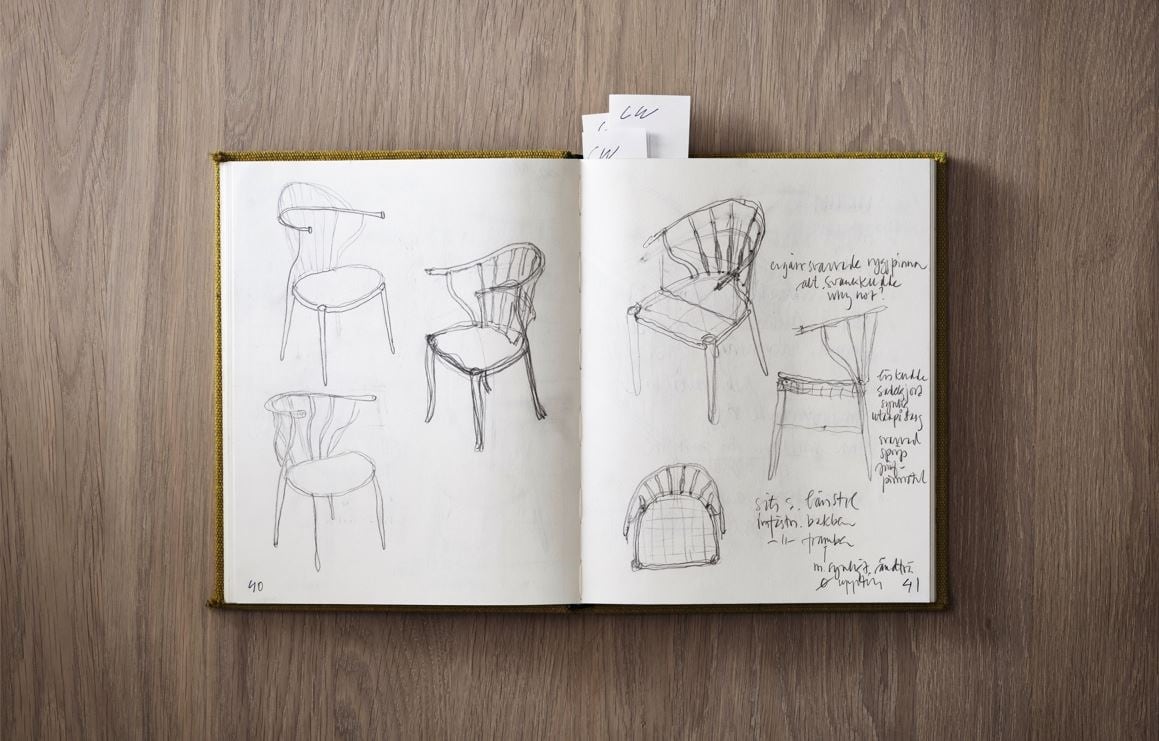 In designer Nirvan Richter's sketchbooks, one can follow the entire journey from the first idea sketch to the finished Armchair China-Windsor.
In designer Nirvan Richter's sketchbooks, one can follow the entire journey from the first idea sketch to the finished Armchair China-Windsor.
Worth knowing!
All notebooks are kept as a valuable treasure in a safe at Norrgavel.
Time-consuming craftsmanship
During the design process, we had a master braider design the braided seat in an anatomically curved shape for optimal seating comfort.
Braiding chair seats is an ancient art. In the past, straw, hickory splinters, sawdust or elm bark were most often used. They simply used whatever material was available in the neighbourhood. Nowadays, a special paper cord is usually used for furniture.
The seat of the China-Windsor armchair is braided with a purpose-built paper cord made in Randers, Denmark, from FSC-certified wood. The cords are also waxed to protect against stains.
Worth knowing!
The actual braiding of a chair seat on the China-Windsor armchair takes at least 2 hours.
Take a closer look at the details - the dovetailing of the rounded back pegs, the bevelling of the lintel and the patient work of the weaver on the seat.
A timeless tranquillity
The Armchair China-Windsor takes up space in the room in a natural way - whether you choose to have several around the dining table or as a solitary desk chair in the study corner. Genuine craftsmanship that radiates calm, timelessness and a dream come true.
Armchair China-Windsor together with Fine-edged desk. A timelessly beautiful and comfortable workspace.
Armchair China-Windsor around Extendable table in white oiled oak. A dining area that radiates timeless harmony.
Zero series in ash
In connection with the launch of the new China-Windsor armchair, there was also the opportunity to see some examples from the zero series - in ash wood.
What is a zero series?
Zero series is a technical term for a stage in the production of new furniture. Once product development is complete and the design is finalised, the next step is production. As soon as we find the right manufacturer, a product sample is ordered. And once this has been secured, the next step is to mass produce a so-called zero series. This is done to ensure consistent quality, from the choice of wood to the finish of the furniture. Once the zero series has been reviewed and approved, the product is ready for launch.
The zero series of the Armchair China-Windsor was produced in ash, a wood that is easy to shape/bend by basing. In parallel, we tested having the chair manufactured in oak, which was successful. And so the decision was made to choose oak for the launch of the Armchair China-Windsor.
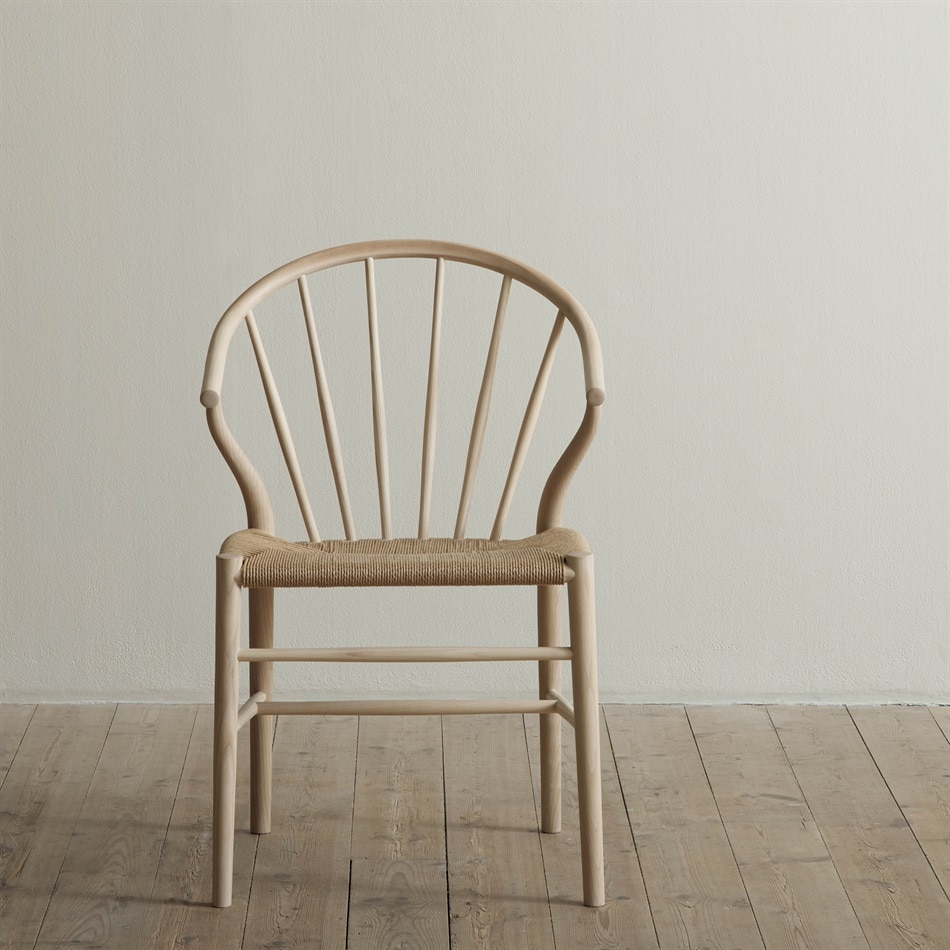
The zero series of the China-Windsor armchair was produced in ash, a wood that is easy to mould by basing.
Did you know that:
» Norrgavels founder Nirvan Richter was born Erik Johansson in 1954, but together with his two siblings he took the name Richter at the age of 20 after his Danish grandmother.
» Nirvan grew up in the suburb of Örby outside Stockholm. He attended Adolf Fredrik's music classes and graduated from the science programme at upper secondary school with a final grade of 4.7. He had the second worst grade in the class. Of his 16 classmates, 11 became doctors.
» After completing his architectural studies at KTH in Stockholm, Nirvan chose to deepen his knowledge in furniture making and studied at the Carl Malmsten School.
» The company name Norrgavel came about in the early 1990s. The Richter family had moved into a street house in Lund and started a business that would become the company Norrgavel, in the farmhouse next door. Nirvan was thinking about what to call his company and was advised during a phone call to choose a name related to the place where the company was located. "What could it be, there's only a high northern gable here!" he exclaimed. he exclaimed, and so it was - the name was nailed down.
» The biggest and most revolutionary insight in Nirvan's life came in the mid-1990s, during his training in therapy and meditation, when a meditation master told him that he only needed to focus on two things in life. Meditate and take risks.
» After discovering the power of meditation in the mid-1990s, Nirvan Richter wanted to demonstrate that he was serious about his newfound life insights, so after receiving guidance from an Indian meditation centre in 1999, he changed his nickname from Erik to Anand Nirvan (meaning "liberation through bliss").

